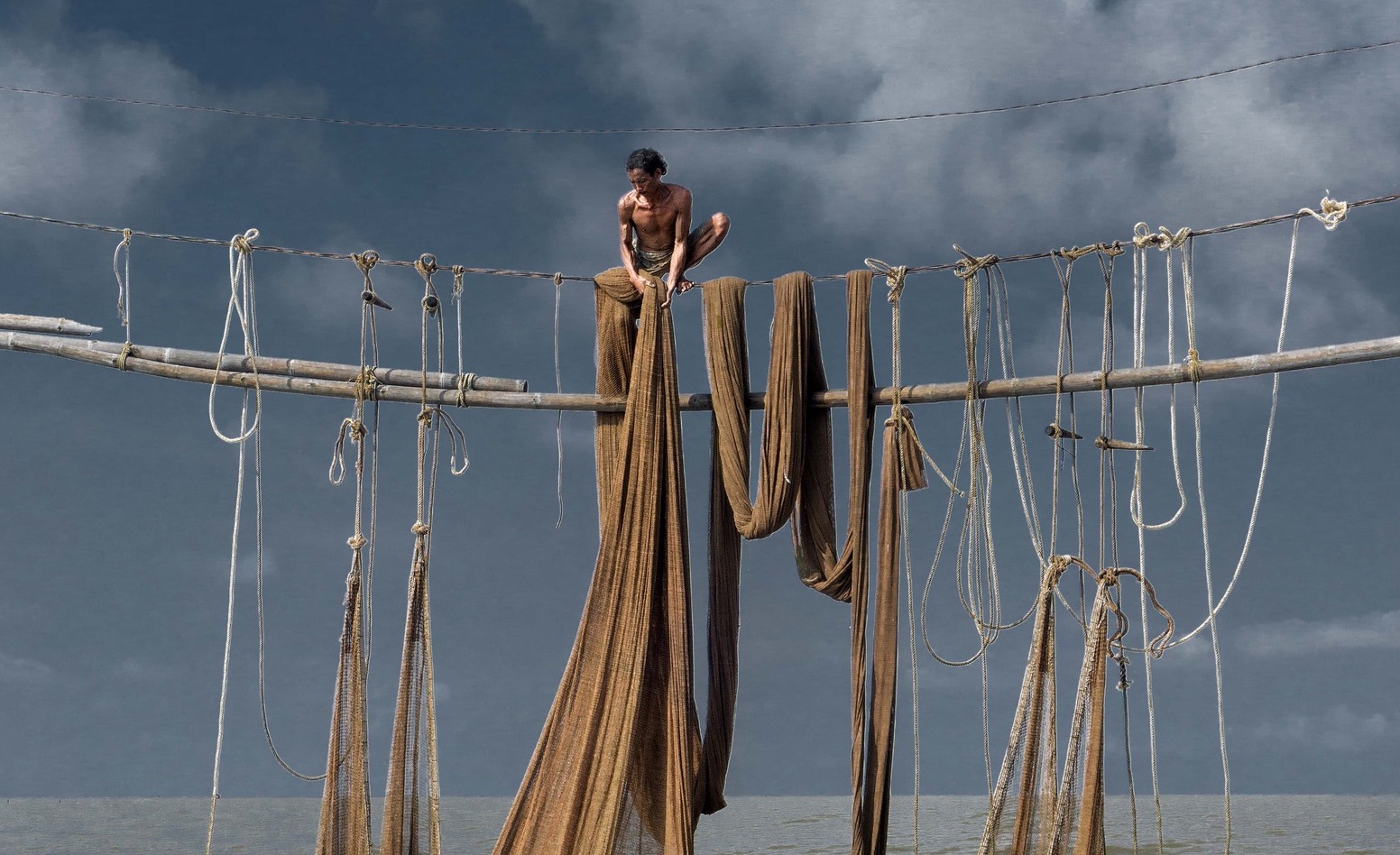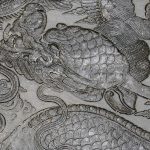Sea acrobats
Fixed traps are typically divided into three types: inshore traps, floating traps, and offshore traps. For hundreds of years, offshore traps have been set in the area between Can Gio and Ca Mau Cape, allowing generations of coastal residents in the Southwestern region to earn a living. In Tra Vinh province, a few fishing households have stuck with this traditional method, working about 15 to 20km offshore of Dong Hai commune in Duyen Hai district.

Setting up offshore traps requires experience and knowledge about marine fishing, and the ability to determine wind directions, sea currents, and the locations of sea channels. Mr. Nguyen Van Si (commonly called Ut Si), has set offshore traps for over 20 years. He explained: “Offshore traps employ cylindrical netted traps attached to wooden poles driven deep into the seabed. In sea channels, these traps are tightly tied to poles that are spaced about 10m apart, stretched across the current, and reinforced with long bamboo poles bound by ropes, with the trap’s mouth forming a catching bag.”

Offshore trap fishing has its own endearing and unique terminology. The investor who supplies the boats and traps is called the “boat owner”, while the fishermen working at sea are called “hut companions”. Each boat owner typically has three or four trap lines, with 10 to 20 trap mouths per line. Each trap line features one or two huts built 15 to 20m above the sea’s surface on a small area of less than five square meters. This is where the “hut companions” rest and reside. Mr. Ut Si belongs to one of the five remaining households in Dong Hai commune still engaged in this trade, living in a hut on the vast sea and braving scorching sun and heavy rain and winds. He explained how the hut and trap structures sway wildly on stormy days. Setting up the poles is hard and intricate work, yet the traps must often be moved to areas with more fish and shrimp.

Life offshore
While the locals fish year-round, the best catches usually fall during the full moon and new moon periods of the lunar months during the southwest monsoon season (March – June) and the northeast monsoon season (September – December). Mr. Dien Trung, a local who often guides photographers, explained that they must wake up before 3 a.m. to catch the incoming tide, as they cannot proceed if they miss it and the channels become too shallow for their boats. From Dong Cao Wharf in Dong Hai commune, the boat owners use a long bamboo pole of about five meters-long to probe the way and avoid getting stuck in the shallows. Further offshore, the waves and wind grow rougher. Forgetting seasickness, everyone is overwhelmed with emotion when they see the sunrise and catch sight of the offshore trap structures emerging in the middle of the sea. It’s especially moving to see the trap fishermen step out of their huts, breathe the fresh air, and begin a new day. They “exercise” by nimbly walking on the trap ropes and jumping into the water to check the traps, swimming and climbing up their huts like professional circus acrobats. As the sky brightens at dawn, following the tidal flow, the fishermen release the traps when the water starts ebbing out to sea. Around 10 a.m., when the tide rises, they proceed to haul in the trap bags. The tidal currents guide the fish and shrimp into the trap mouths and bags. With each tidal cycle, the trap fishermen must skillfully pull up and empty all of the trap bags.

When hauling in the traps, two fishermen work together to raise and empty the catch into the boat’s hold. Resetting the traps so that they are firmly anchored to the seabed and aligned with the tidal flow also requires great skill. After such arduous labor, the trap fishermen are generously compensated based on a share system, per trap mouth. Each person can choose any trap mouth they want. On lucky days, a single trap bag can yield two to four baskets of fresh fish, shrimp, and anchovies – the ultimate joy for every fisherman.

Due to darkness, bone-chilling cold, and the occasional stinging rain storm, it’s ten times harder to set up the offshore traps during the southwest monsoon season than during the northeast monsoons. However, these “sea circus acrobats” are addicted to life on the waves and committed to continuing their ancient trade.
In peaceful moments, under soft moonlight and gentle breezes, the boat owners and trap fishermen leisurely share drinks and exchange joys and sorrows over meals of fresh seafood. They hum folk songs and let their souls drift with the currents, easing their longing for their loved ones back on land.





